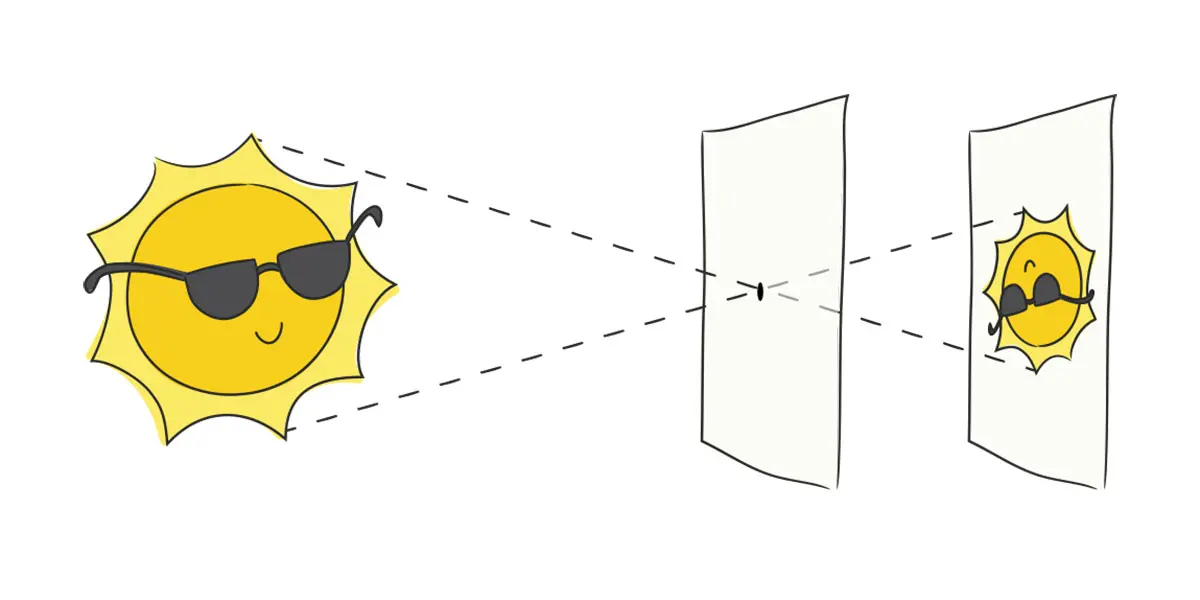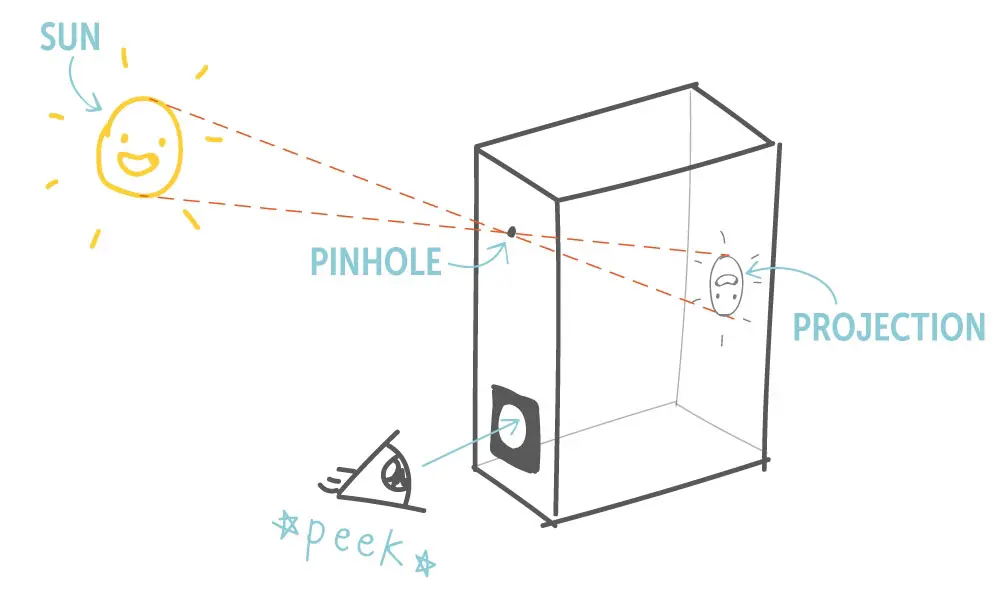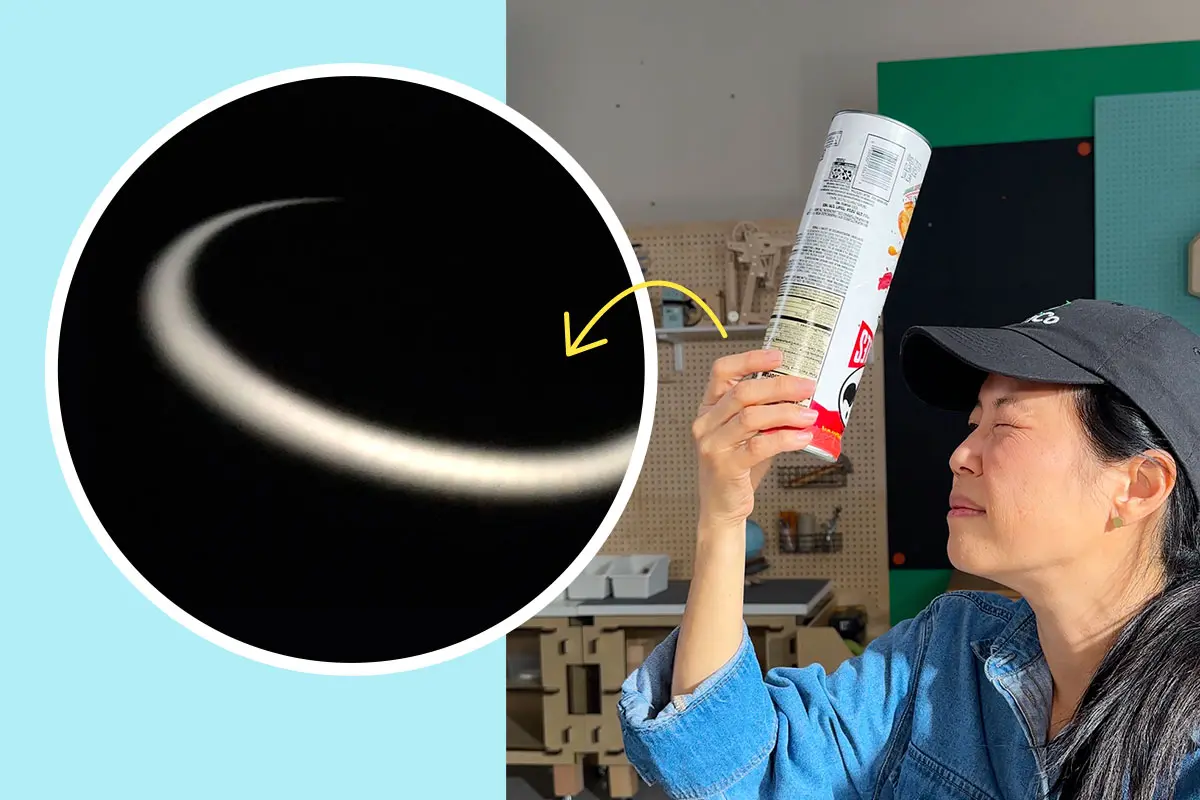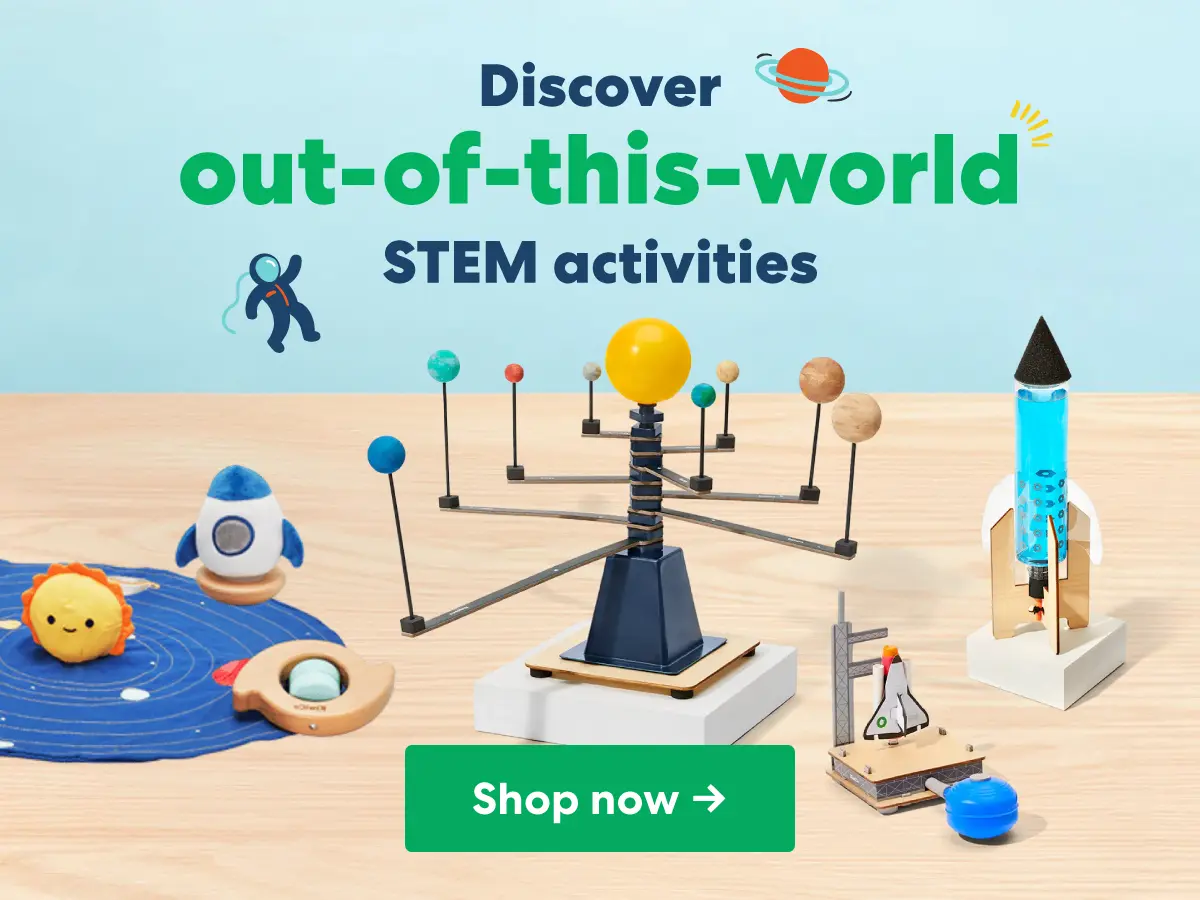Learn How Eclipses Work
Did you know that there's a special word for when three planets or moons are in a straight line? And that Earth is the only planet in our solar system with total eclipses? Watch and discover six surprising facts about solar eclipses, then try your own demo eclipse at home!
You need two friends, a ping-pong ball for the moon, and a flashlight for the Sun. Have one friend hold the flashlight and stand a few paces away with your other friend in between. Work together to find the spot where the ping-pong ball blocks your view of the flashlight Sun. Notice how the ping-pong ball moon has to be lined up with the Sun and the perfect distance away? That’s true for our moon as well!
Make a Pinhole Viewer

DIY eclipse viewers work using a pinhole — a teeny hole that allows a tiny fraction of the Sun’s light through. The light rays that do pass through the pinhole project the image of the Sun onto the paper. To try this, just use a pushpin to poke a hole in a stiff piece of paper or sheet of tinfoil and hold it over a surface. During an eclipse, you’ll be able to see its crescent shape projected onto the surface below.
Beside being easy to make with household materials, a pinhole viewer also has the advantage of reducing the risk of accidentally looking directly at the Sun since to use one, you look down at the projection rather than up at the sky. This makes pinhole viewers an appealing choice for young kids who need supervision to safely watch an eclipse.
Of course, you can also find eclipse glasses that use a solar filter to block most of the Sun’s light and make it safe to view. Just be careful that the solar filter isn’t scratched and that it’s rated to be safe in full sunlight. (We recommend this guide for safe viewing from the American Astronomical Society for help in choosing a safe solar filter.)
Design a Cardboard Box Eclipse Viewer

You can view an eclipse with a plain old pinhole, but creating a darker space to show the projection makes the image easier to view. Just about any box will work, and, if you want, you can decorate and make it your own.
Try a Chip Can Eclipse Viewer

This viewer is even easier to make than the box viewer and is quick to decorate with a scrap of wrapping paper. And if you don’t have a Pringles can handy, you can use a paper towel roll instead.
Go Big with a Wearable Solar Viewer

Fashionable? No. But this wearable viewer is the best way to get a great view of an eclipse without frying your eyes. Light from the Sun is focused through a tiny pinhole, then projected onto a screen to create a solar show for your eyes only!
About KiwiCo
KiwiCo is on a mission to inspire the next generation of innovators and build creative confidence through seriously fun play. Learn more.

Discover out-of-this-world STEM activities.
